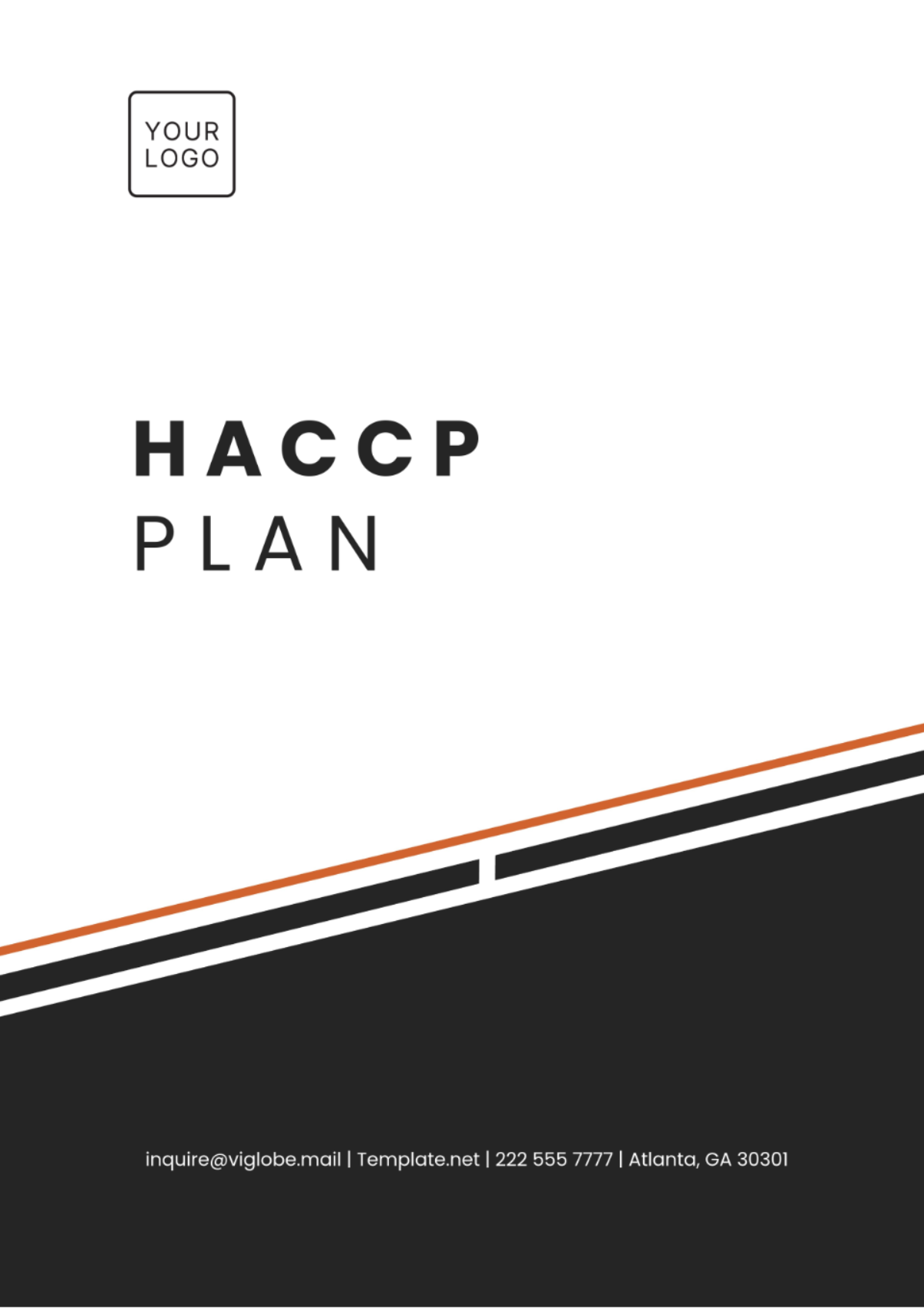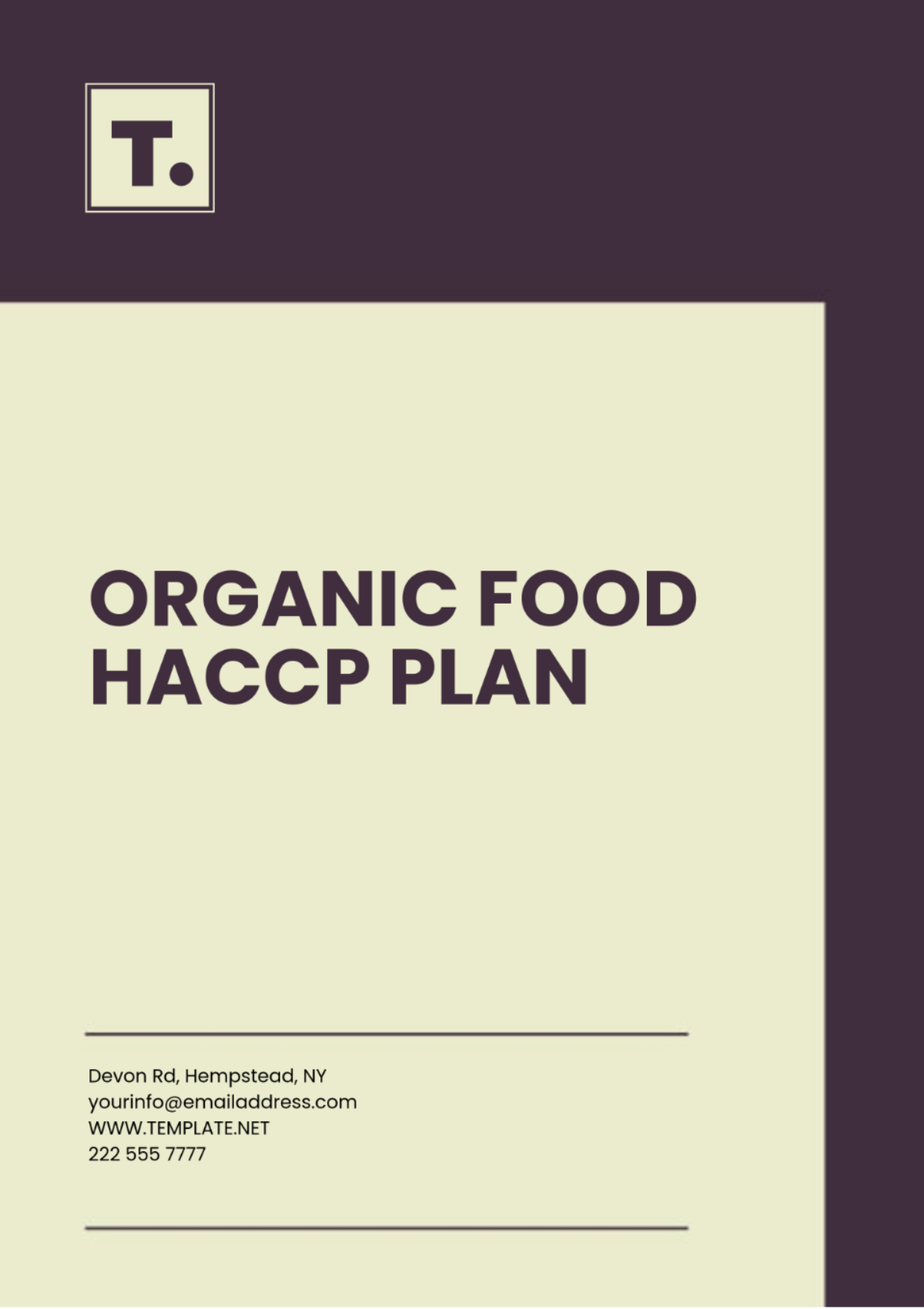Meat And Poultry HACCP Plan
Date: April 16, 2060
Prepared by: [YOUR NAME]
I. Product Description
This section details the meat and poultry products processed for consumer sale, including chicken, turkey, pork, and beef cuts. These products are available in various forms: fresh, frozen, or cured. They may be enhanced with marinades, sauces, or spices to improve flavor and product appeal. Packaging methods include vacuum-sealed bags or rigid containers, often supplemented with preservation agents to extend shelf life and maintain quality. The packaging materials are designed to ensure food safety and prevent contamination during handling, storage, and transportation.
II. Flow Diagram
The following is a detailed flow diagram representing the step-by-step process in the production of meat and poultry products:
Receiving of Raw Materials: The procedure includes carefully examining and then endorsing the quality of raw meat and poultry products obtained from suppliers who have already been validated and authorized to comply with set standards.
Storage of Raw Materials: The placement of raw materials into cold storage is carried out to ensure the maintenance of their quality and to prevent any spoilage from occurring.
Pre-processing (Thawing, Cutting): Controlled thawing (if needed) and cutting to required specifications for further processing.
Processing (Grinding, Mixing, Marinating): Combining ingredients (such as seasonings and marinades) with meat or poultry through grinding, mixing, and marinating processes.
Cooking: The procedure includes cooking meat or poultry using a heat source like an oven or stove, and keeping it heated until its internal temperature meets food safety standards for safe consumption.
Cooling: Conduct a swift reduction in temperature to inhibit the proliferation of bacteria and adequately prepare the product for subsequent packaging.
Packaging: Ensuring the freshness and safety of products by carefully placing them in suitable packaging and securely sealing them.
Labeling: Labeling packages entails providing all essential details, such as comprehensive product descriptions and the specific expiration dates for each item.
Distribution: Preparing products for transportation to retail outlets or consumers.
III. Hazard Analysis
The following are the potential hazards identified at various stages in the production process:
Process Step | Potential Hazard | Type of Hazard |
|---|---|---|
Receiving of Raw Materials | Contamination from external sources | Biological |
Storage | Growth of pathogens due to inadequate temperature control | Biological |
Processing | Metal contamination from processing equipment | Physical |
Cooking | Incomplete cooking leads to the survival of pathogens | Biological |
Packaging | Chemical contamination from packaging materials | Chemical |
Cooling | Inadequate cooling, causing pathogen growth | Biological |
IV. Critical Control Points (CCPs)
Critical Control Points are key steps where control measures are essential to prevent or eliminate food safety hazards:
Receiving: Verification of supplier certifications, inspection of raw materials, and assurance of sanitary transport conditions to prevent contamination.
Storage: Cold storage must be maintained at or below 4°C (39.2°F) to inhibit pathogen growth.
Cooking: Meat and poultry products must reach safe internal temperatures: 74°C (165°F) for poultry, and 71°C (160°F) for other meats, to ensure proper pathogen destruction.
Cooling: Rapid cooling to ≤ 4°C (39.2°F) within two hours to prevent bacterial growth and ensure food safety.
V. Monitoring Procedures
Effective monitoring ensures that CCPs are maintained under control throughout the process:
Receiving: Inspect and log delivery truck conditions (temperature, cleanliness) and raw material temperatures upon receipt.
Storage: Use continuous temperature monitoring systems with logs recorded every 4 hours to track storage conditions.
Cooking: Use calibrated thermometers to check the core temperature of meat in every batch, ensuring safe cooking temperatures are achieved.
Cooling: Monitor the cooling process by checking the temperature at regular intervals, ensuring rapid cooling within the required timeframe.
VI. Corrective Actions
When monitoring reveals that CCPs are not met, immediate corrective actions are taken:
Receiving: Reject raw materials that do not meet the required quality or temperature specifications.
Storage: If storage temperatures exceed limits, products are transferred to proper storage immediately, and their quality is reassessed before use.
Cooking: Any product that does not reach the required internal temperature is re-cooked to ensure safety.
Cooling: If cooling is not within limits, use alternative methods such as ice baths to bring down temperatures quickly.
VII. Verification Procedures
Verification ensures that the HACCP system is functioning effectively:
Equipment Calibration: Regular calibration of thermometers and monitoring equipment to maintain accuracy.
Review of HACCP Records: Quarterly review of temperature logs, corrective actions, and monitoring data.
Internal Audits: Conduct comprehensive audits of the entire process annually to confirm compliance with food safety standards and HACCP guidelines.
VIII. Record Keeping
Maintaining accurate and thorough records is essential for tracking compliance and food safety performance:
Delivery and Temperature Logs: Record temperatures at receiving and during storage to ensure that conditions remain safe.
Cooking and Cooling Logs: Document internal cooking temperatures and cooling times for each batch.
Corrective Action Reports: Record instances where CCPs were not met and actions taken to resolve the issues.
Verification Reports: Maintain records of equipment calibration, audit results, and HACCP reviews.





























